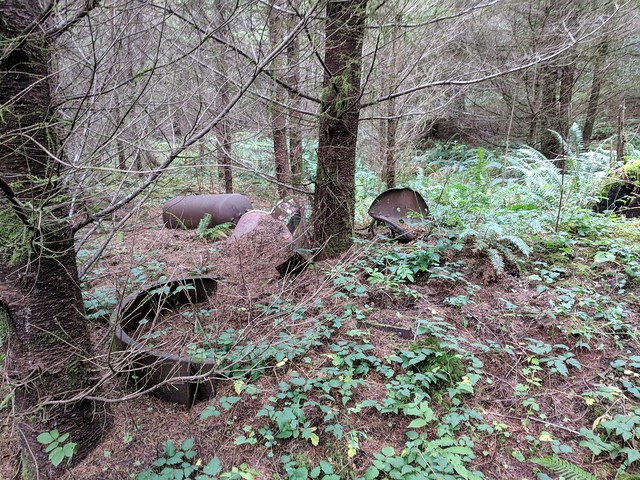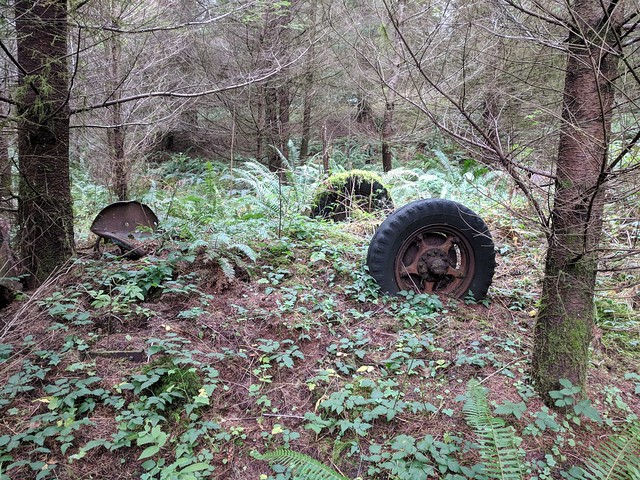Most of these sites I'm talking about sprung up in the last wave of land-grabber/white homesteaders in the late 1800's and early 1900's. Many of them lasted, at most, a couple decades before the occupants realized how hard it was to grow crops on a PNW hillside with thin, clay soil best suited for sword fern and douglas fir. Most of them were abandoned and the land absorbed by large timber companies who let the trees regenerate and the buildings quietly rot away. Or, like in the case of my childhood house, the majority of the homestead land is absorbed, while the house, outbuildings and useless-for-logging-purposes flat ground near the creek was sold as a residence.
In some cases, families clung to homestead lands for as long as they could, slowly selling land to the timber companies when they needed money. As the original houses rotted, they built new houses closer to the public roads and highways, often delegating the original home sites as garbage dumps (because even to this day in rural communities, it's much cheaper than a long trip to the landfill).
So, if you're stomping around inside a tree farm and come across a spindly pear tree growing on a bench far from any road, or an old plow, or truck chassis, rusty artifacts like old water heaters or oil cans, someone once had a house there, and a few chickens, pigs, and maybe cows.



No comments:
Post a Comment